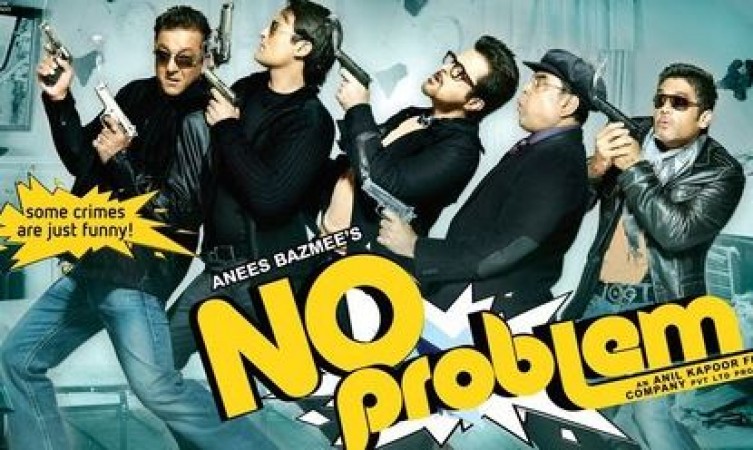
To create unforgettable moments on screen, filmmakers incorporate elements from a variety of sources, and sometimes these sources are noticed when comparing or contrasting different films. This is the situation with a specific scene from the classic American comedy "The Naked Gun: From the Files of Police Squad" and the Indian action-comedy "No Problem." The scene in question shows Arjun, the main character of "No Problem," going through a string of unfortunate events and ending up in the sea. This scene has gained attention due to its uncanny similarity to a scene in "The Naked Gun," in which the foolish Detective Frank Drebin experiences a series of similar misfortunes before falling into the water. This article examines the idea of homage in film while diving into the startling parallels.
The Bollywood comedy "No Problem," which was directed by Anees Bazmee, was released in 2010. Slapstick humour, ridiculous stunts, and extravagant action scenes are the film's main draws. A scene where the movie's protagonist, Arjun, played by Anil Kapoor, is shot and then goes on a number of hilarious misadventures before finding himself in the sea is one example of this kind of scene.
Arjun is shot in the scene and suffers injuries, but rather than passing away from the wound, he struggles to survive a disorganised chain of events. Arjun's mishaps mount up, from bumping into street performers to unintentionally starting a massive traffic jam and even ruining a wedding. He eventually ends up on a speeding boat that launches him into the water after colliding with a dock. The sequence emphasises the humorous tone of the movie with its whirlwind of absurdity.
American slapstick comedy "The Naked Gun: From the Files of Police Squad" was directed by David Zucker in 1988. The role played by Leslie Nielsen as Detective Frank Drebin is the main source of the film's satirical and ridiculous humour. One of the most memorable sequences in the movie features Drebin, who, following his shooting, goes on a hilarious string of adventures that are reminiscent of Arjun's antics in "No Problem."
Drebin is shot in this scene and has to go through a lot of ridiculous obstacles. He hijacks a car, interrupts a marching band, unintentionally leads a summit of world leaders, and even ends up atop a parade float covered in fireworks before plunging into the water. The scene is a masterclass in absurdity and physical comedy, perfectly capturing the spirit of humour that has made "The Naked Gun" series famous.
Considering how strikingly similar the two scenes are, the following query comes up: Was Arjun intentionally paying homage to "The Naked Gun" with his awkward sequence in "No Problem"? Or is it just a coincidence that there are similar scenes in both movies?
Filmmakers frequently use iconic scenes as a way to reference, recreate, or reinterpret beloved films or their predecessors. These homages to the past of cinema are an expression of the impact and motivation that past motion pictures have had on their creations. They might be interpreted as an expression of deference and an effort to establish a connection with viewers who might be aware of and enjoy these allusions.
Regarding "No Problem," it's conceivable that the directors were in fact honouring "The Naked Gun." Bollywood has a long history of using aspects from other film industries, including Hollywood, in its productions. Indian filmmakers have frequently taken inspiration from the world of film, whether it be for storylines, soundtracks, or, as in this instance, a humorous scene.
The similarity between the two scenes may just be a coincidence, but given how many of the elements are the same (getting shot, starting a chaos, ending up in the water), it seems likely that an intentional attempt was made to recreate the memorable scene from "The Naked Gun." But only the filmmakers know the true purpose of the tribute.
One of the most interesting aspects of filmmaking is homogeneity. It gives writers and directors the chance to interact with the past of cinema, giving their creations a nostalgic feel and a link to the larger film industry. Filmmakers build a link between the past and present by honouring iconic films or scenes, beckoning viewers to return or unearth the cinematic gems that influenced them.
In addition, homage functions as a type of intertextuality in film, in which one piece of work alludes to another, weaving a web of related stories, characters, and themes. These allusions can improve the viewing experience by giving a movie more depth and enjoyment.
There is an obvious parallel between the scene in "No Problem" where Arjun falls into the sea after a string of humorous mishaps and a similar scene in "The Naked Gun: From the Files of Police Squad." Whether it's a purposeful nod or a happy accident, the scene demonstrates the timeless impact of classic comedy on modern film. Filmmakers can honour the works that have influenced them by paying homage to them, bridging the gap between the old and the new while giving audiences a delightful sense of cinematic interconnectedness.
Even though we may never know the real motivation behind this scene's creation in "No Problem," it nevertheless proves the lasting influence of classic comedies on filmmakers all over the world. Whether deliberate or not, this humorous tribute serves as a reminder of how humour is a universal language in the film industry that cuts across national boundaries and cultural divides.
"Parda Hain Parda" in the World of "Dhol"
Akshay Kumar Revives the Khiladi Brand in 'Khiladi 786'
Bollywood's Bittersweet Goodbye to Aziz Mirza with 'Kismat Konnection'